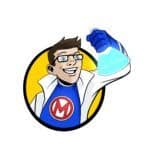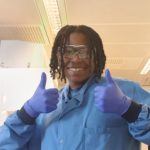-
Asked by anon-374157 on 13 Nov 2023.0
Question: What are the worst possible things that could go wrong?
- Keywords:
-
Rachel Owen answered on 13 Nov 2023:
I often work with infectious pathogens… I think any of those getting out of containment and either infecting me or someone else would be very bad!
-
Michael Schubert answered on 13 Nov 2023:
Experiments can go wrong in all sorts of ways! Personally, I think the worst possible thing is when you have a long, difficult, or expensive experiment and something silly goes wrong at the very last minute (like dropping a dish or accidentally putting the wrong treatment into the wrong container of cells). Then you have to start all over again and it can take weeks or cost a lot of money.
From a scientific perspective, the two most dangerous things I’ve ever worked with in a lab are ricin (a very unpleasant poison) and radiation. It would have been very bad if either of those two things got somewhere they didn’t belong! That’s why everyone who worked in the radiation room had to have a special change of clothes that they only wore in that room and a special badge to measure the radiation levels at all times. When we work in dangerous environments, we have lots of safety rules and precautions!
The most dangerous experience I’ve ever had personally was in university when I was studying the biology of large animals. I was in a forest in Canada and ran into a curious bear! Luckily, we knew what to do to stay safe and the bear didn’t think we looked too tasty that day…
-
Martha Mulongo answered on 13 Nov 2023:
A number of things. Experiments may not work out. I grow nematodes in the lab. Some nematodes may fail to grow. When extrcting DNA from samples, you can fail to find DNA or low DNA.
-
Jess Davies answered on 13 Nov 2023:
Definitely lots of dangerous chemicals and acids. It’s surprising what sort of things you have to work with to research DNA!
Some liquids can give you cancer, others can harm unborn children and so can’t be used by someone pregnant, others are poisonous, and then there are those that you can’t mix or it might cause the lab to explode…
Saying all that, that is why we wear lab coats, gloves, and safety glasses, to protect us from all those nasty things! And use a fume hood when we need to.
So in short – the worst thing is probably death. -
Hayley Free answered on 14 Nov 2023:
Probably that all the computers crashed and I would no longer be able to complete my research! More realistically though it could be loss of data (which is why you have multiple back-ups of your data), or even someone “scooping” your research which is where they manage to publish what you are doing/something similar before you do.
-
Sophie Shaw answered on 15 Nov 2023:
In my work, it’s giving someone an incorrect genetic diagnosis which then means they miss treatment or receive the wrong treatment. In the absolute worst scenario, this could be the difference between life or death, so we have lots of procedures in place to make sure that never happens.
-
Martin Johnsson answered on 17 Nov 2023:
My experiments aren’t really that dangerous! I work with farm animals, companion animals, and differen types of DNA analyses from them.
Of course, accidents could happen–someone could be accidentally trampled by a cow, or fall over when carrying a chicken, break some glass in the lab–but most of what we do is very undramatic. 🙂
-
-
Debbie Guest answered on 27 Nov 2023:
I think the worst thing that could happen is that someone got hurt while carrying out an experiment. But everyone undergoes training before they work in the lab and risks are reduced as much as possible by using protective equipment, safety hoods etc
Related Questions
Latest Questions
-
what was the most advancing breakthrough
-
Is there life on other planets? If so, is it in any way similar to human life (1 Comment)
-
can you clone a person
-
What are the worst possible things that could go wrong?
-
would you like to bring extinct animals back to life
-
what is your favourite genetic mutation?
-
Do you aspire to research the other contributors to genetic diseases and dysregulations (eg stress)?
-
What drew you to studying nematodes specifically?
-
what is your yearly income
-
What do you do in your spare time? (2 Comments)







Comments